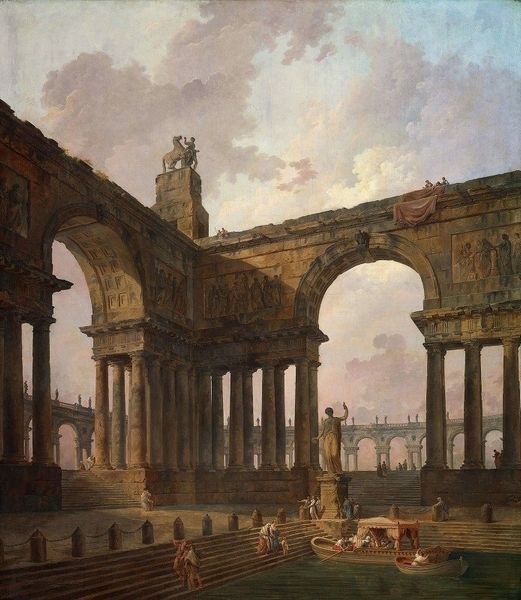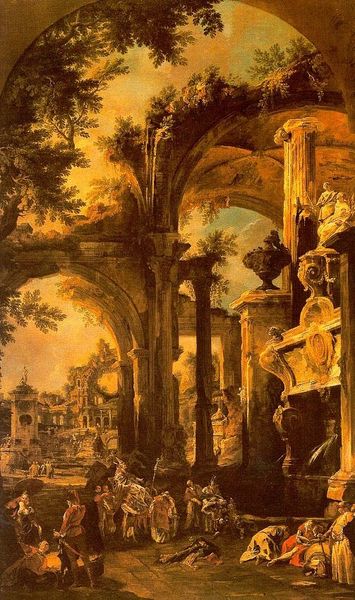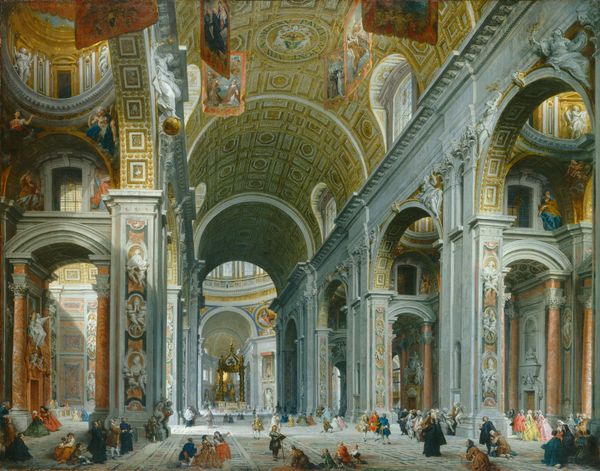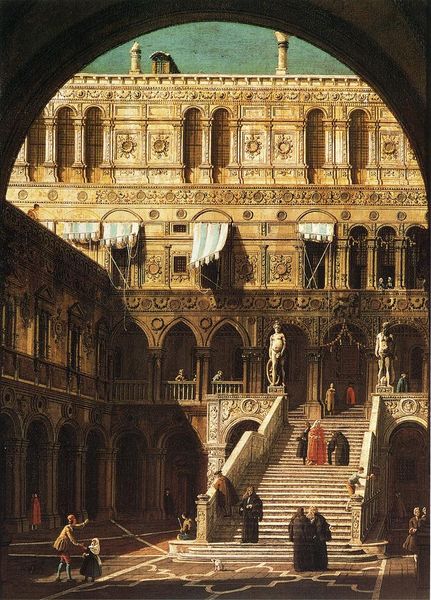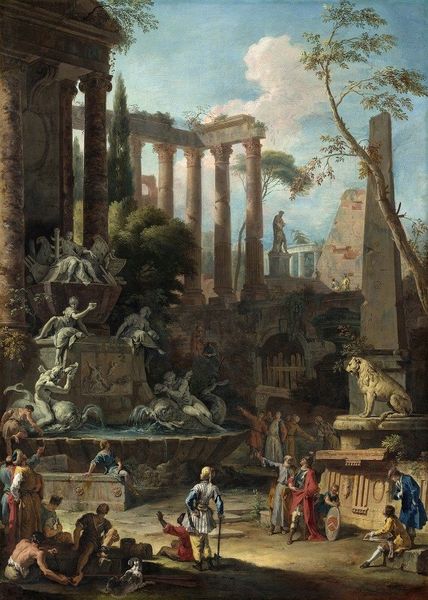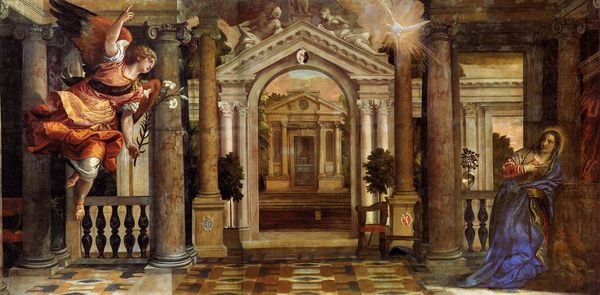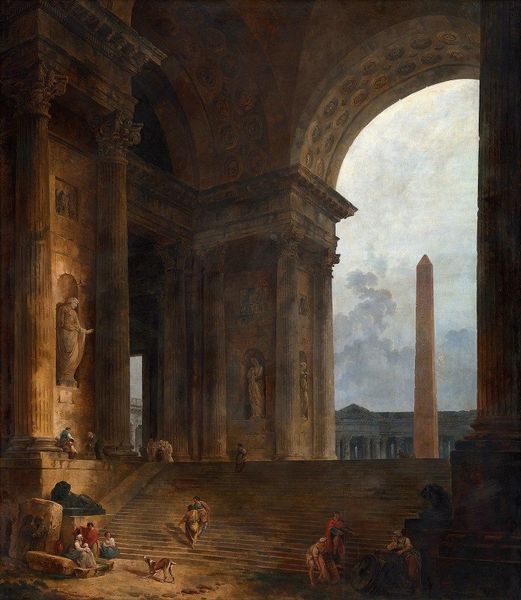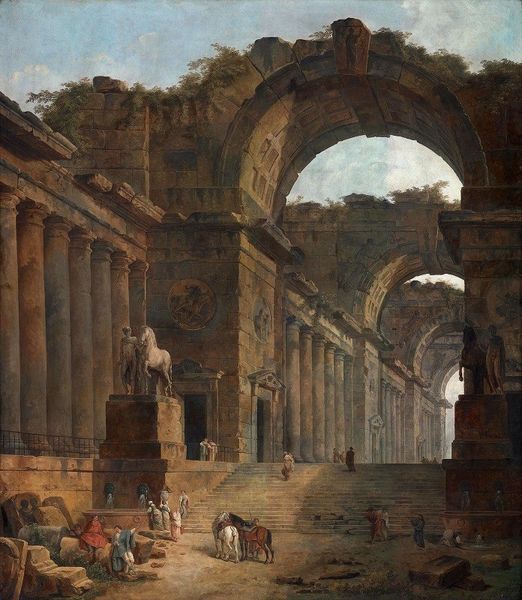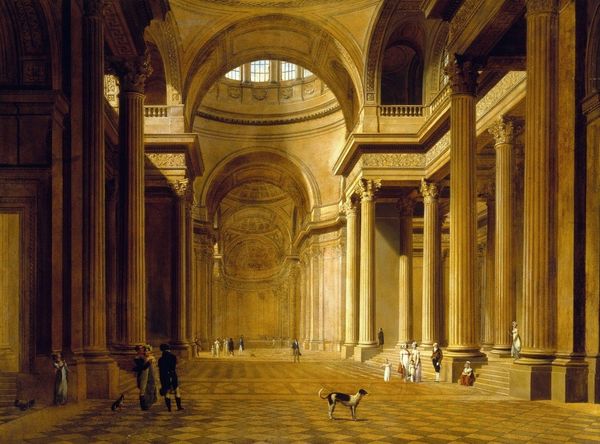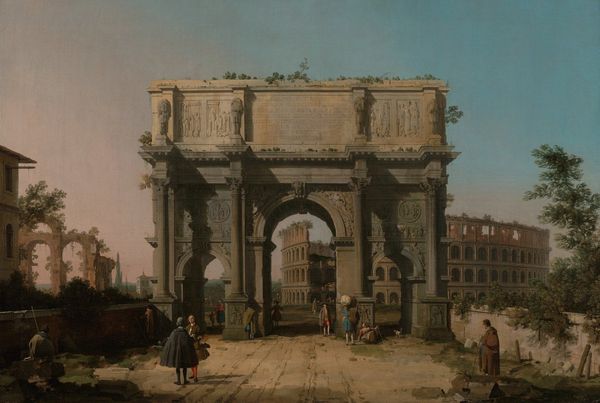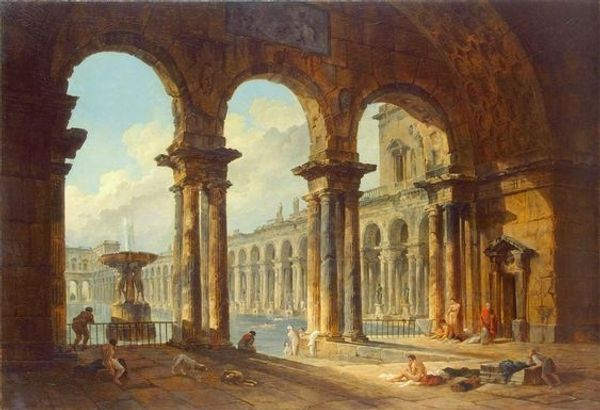
Capriccio of a Renaissance Triumphal Arch seen from the Portico of a Palace 1755
0:00
0:00
canaletto
Private Collection
Dimensions: 100.97 x 128.27 cm
Copyright: Public domain
Art Historian: Editor: Editor: So, this is Canaletto's "Capriccio of a Renaissance Triumphal Arch seen from the Portico of a Palace," created around 1755 using oil paint. I find the scene strangely calming, despite the imposing architecture. What do you see in this piece? Art Historian: I'm immediately drawn to the labor represented here, or rather, subtly *un*represented. The immaculate architecture suggests immense resources and, of course, exploited labor. How much toil was involved to build that arch? We should think about those unknown craftsmen, not only Canaletto himself, but all other skilled, anonymous labor, and how it gets erased by notions of singular "genius" or the artist's brand. Editor: That’s a perspective I hadn’t considered. I was focusing on the architectural details and the people depicted seemingly enjoying the space. But you’re right, there's an implied story about creation itself here. Art Historian: Exactly! And consider the materials themselves: the marble quarried, transported, and carved, the pigments ground and mixed for the oil paint. All come with the cost of labor and transport! Everything is transformed to its form now - by its inherent materiality - oil, pigment, canvas – these are also commodities to a social context which the artwork is also situated within and contributes to. Canaletto wasn’t just painting a pretty scene; he was participating in a system of production. Do you think the "capriccio," or fantasy element, obscures this reality? Editor: Perhaps, yes. The idealized vision might romanticize the system. It also makes me rethink landscape paintings generally as cultural products deeply tied to economic realities. Thanks so much! Art Historian: Absolutely. Thinking about art this way allows us to understand not just what’s on the surface, but the complex web of material and social relations that bring it into existence. A fresh perspective indeed.
Comments
No comments
Be the first to comment and join the conversation on the ultimate creative platform.
